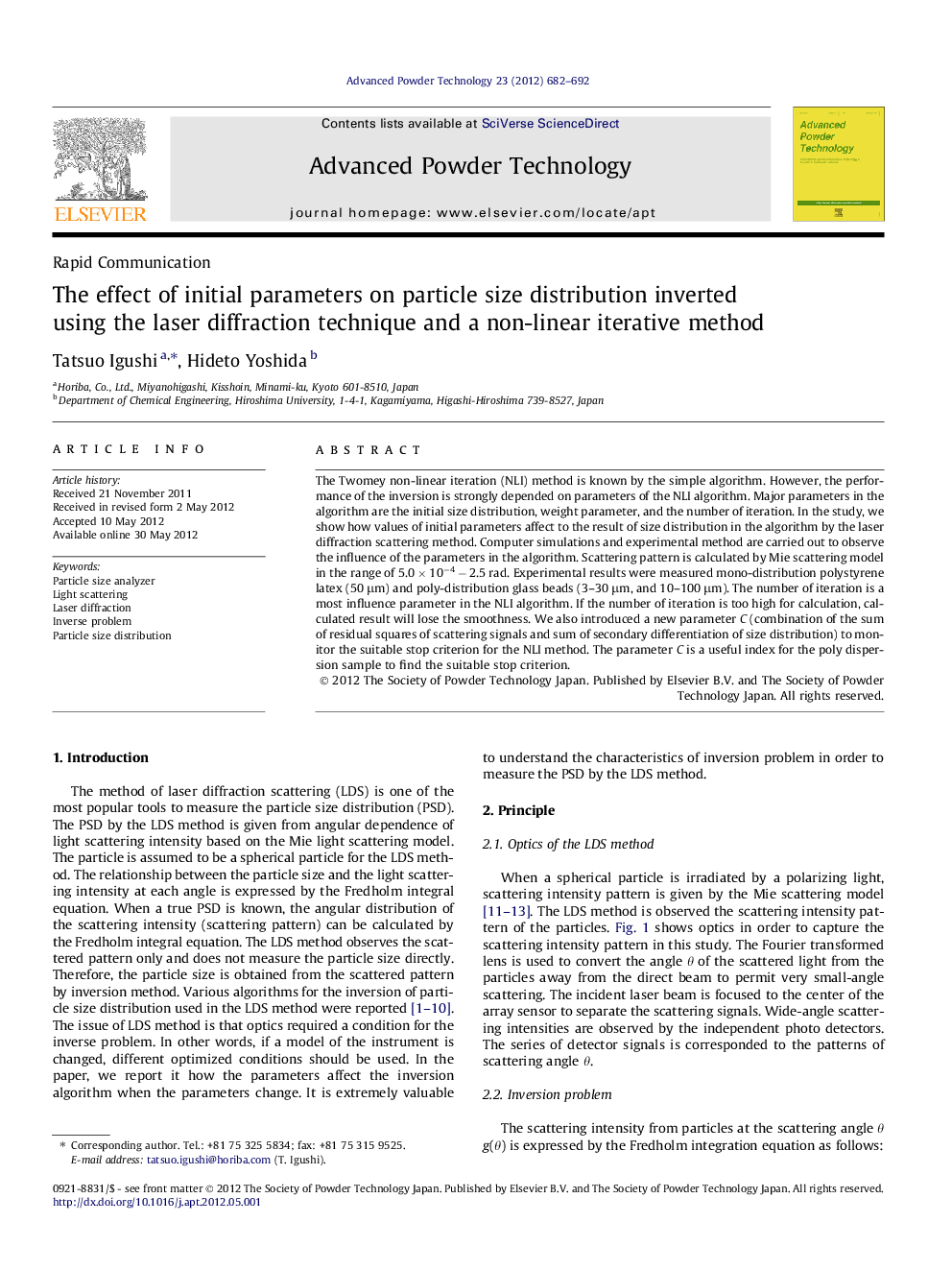| Article ID | Journal | Published Year | Pages | File Type |
|---|---|---|---|---|
| 144252 | Advanced Powder Technology | 2012 | 11 Pages |
The Twomey non-linear iteration (NLI) method is known by the simple algorithm. However, the performance of the inversion is strongly depended on parameters of the NLI algorithm. Major parameters in the algorithm are the initial size distribution, weight parameter, and the number of iteration. In the study, we show how values of initial parameters affect to the result of size distribution in the algorithm by the laser diffraction scattering method. Computer simulations and experimental method are carried out to observe the influence of the parameters in the algorithm. Scattering pattern is calculated by Mie scattering model in the range of 5.0 × 10−4 − 2.5 rad. Experimental results were measured mono-distribution polystyrene latex (50 μm) and poly-distribution glass beads (3–30 μm, and 10–100 μm). The number of iteration is a most influence parameter in the NLI algorithm. If the number of iteration is too high for calculation, calculated result will lose the smoothness. We also introduced a new parameter C (combination of the sum of residual squares of scattering signals and sum of secondary differentiation of size distribution) to monitor the suitable stop criterion for the NLI method. The parameter C is a useful index for the poly dispersion sample to find the suitable stop criterion.
Graphical abstractWe examine the effect of initial parameters of inversion by laser diffraction technique. Iteration is the potent parameters of the algorithm. A new parameter of combination of the residual signal and smoothness of size distribution is helpful in finding suitable number of iteration.Figure optionsDownload full-size imageDownload as PowerPoint slideHighlights► We examined the effect of initial parameters of the inversion algorithm by laser diffraction method. ► Most serious parameter in the algorithm was the number of iteration. ► Fitness of the inversion is not monitored by a residue of signals. ► Combination of the residue of signals and smoothness of size distribution is introduced. ► The combination of the parameter is a potent parameter to find appropriate iteration.
